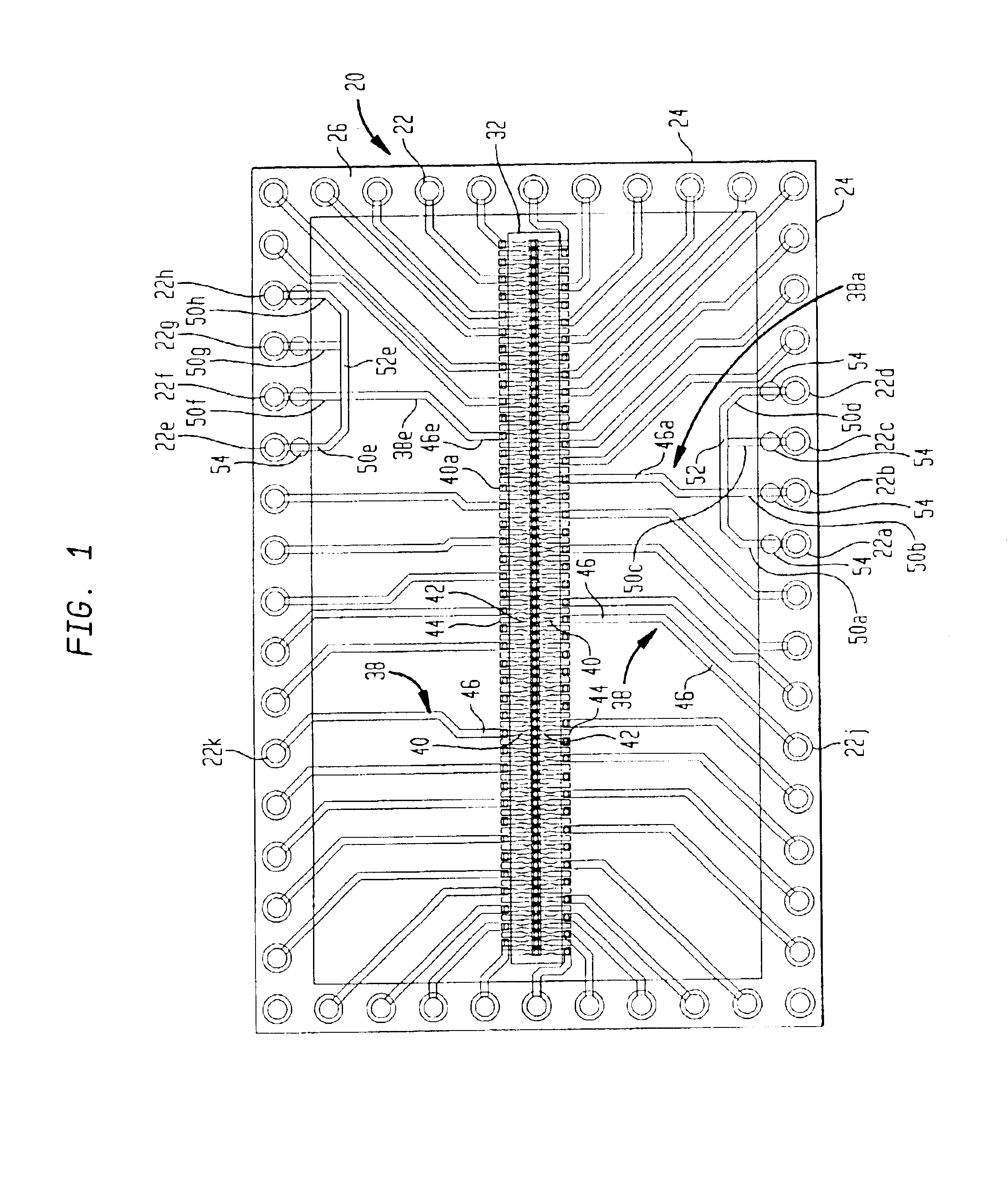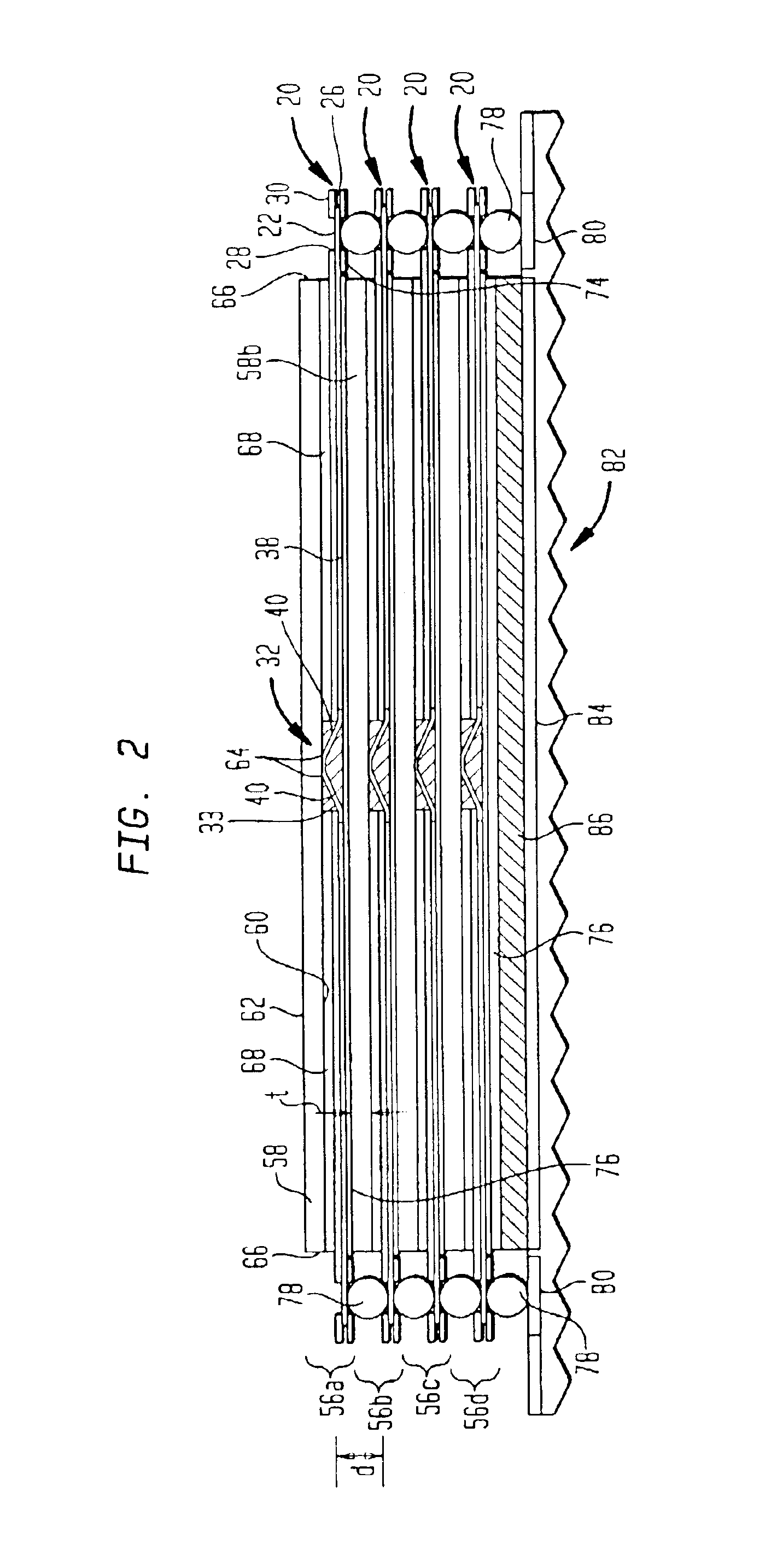Stacked packages
a technology of stacking packages and circuit boards, applied in the direction of printed circuit aspects, sustainable manufacturing/processing, final product manufacturing, etc., can solve the problems of limiting the speed of circuit operation, requiring appreciable time for signal propagation, and traces on circuit boards typically have significant length and impedan
- Summary
- Abstract
- Description
- Claims
- Application Information
AI Technical Summary
Benefits of technology
Problems solved by technology
Method used
Image
Examples
Embodiment Construction
[0062]A package in accordance with one embodiment of the invention uses a plurality of package elements 20, each such element being in the form of a circuit panel. Each such circuit panel may include a dielectric layer in the form of a thin, flexible dielectric tape as, for example, a layer of reinforced or unreinforced polyimide, BT resin or the like on the order of 25-100 μm thick, most preferably 25-75 μm thick. Alternatively, each panel may include a dielectric such as a fiberglass-reinforced epoxy as, for example, an FR-4 or FR-5 board. The panel has numerous terminals 22 disposed in rows within a peripheral region of the panel, adjacent the edges 24 of the panel. In the embodiment illustrated, rows of terminals are provided along all four edges. However, the terminals can be provided adjacent less than all of the edges as, for example, in two rows adjacent to two opposite edges of the panel. Each terminal 22 may be in the form of a flat, relatively thin disc of copper or other...
PUM
 Login to View More
Login to View More Abstract
Description
Claims
Application Information
 Login to View More
Login to View More - R&D
- Intellectual Property
- Life Sciences
- Materials
- Tech Scout
- Unparalleled Data Quality
- Higher Quality Content
- 60% Fewer Hallucinations
Browse by: Latest US Patents, China's latest patents, Technical Efficacy Thesaurus, Application Domain, Technology Topic, Popular Technical Reports.
© 2025 PatSnap. All rights reserved.Legal|Privacy policy|Modern Slavery Act Transparency Statement|Sitemap|About US| Contact US: help@patsnap.com



